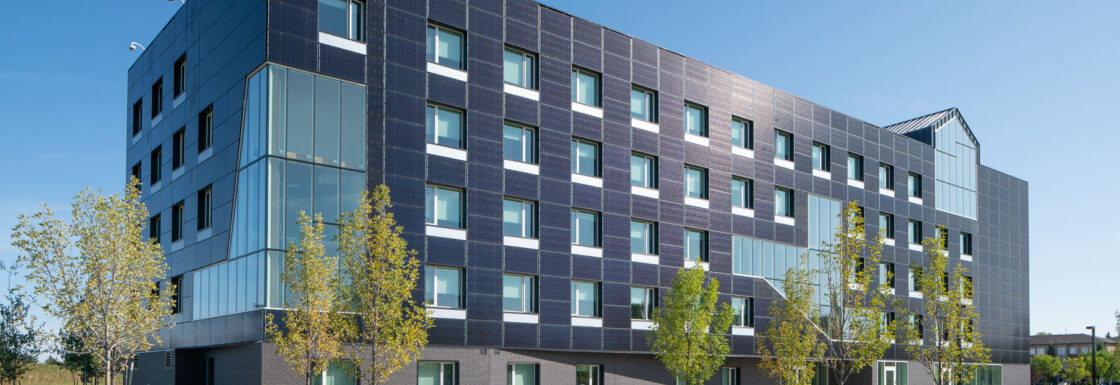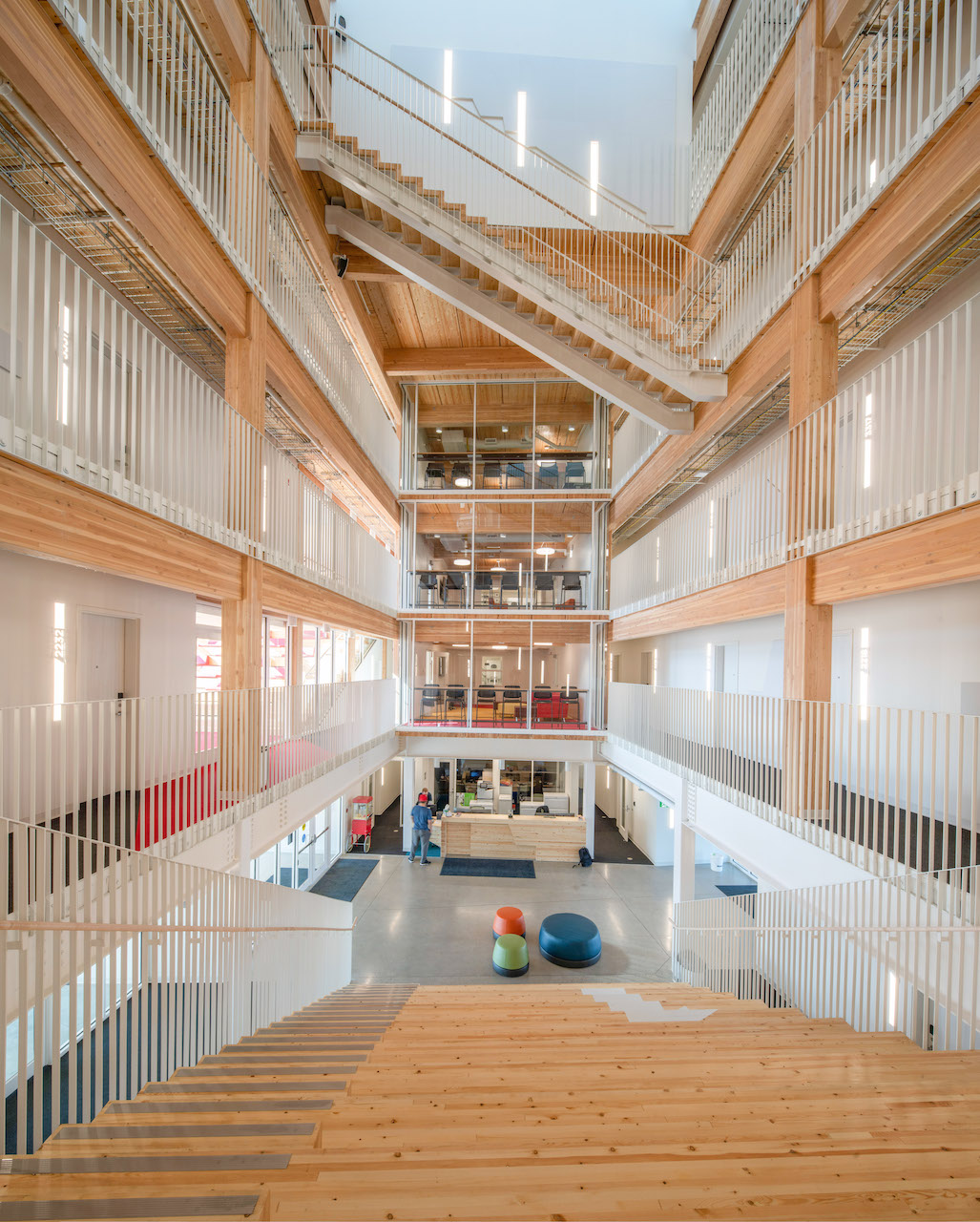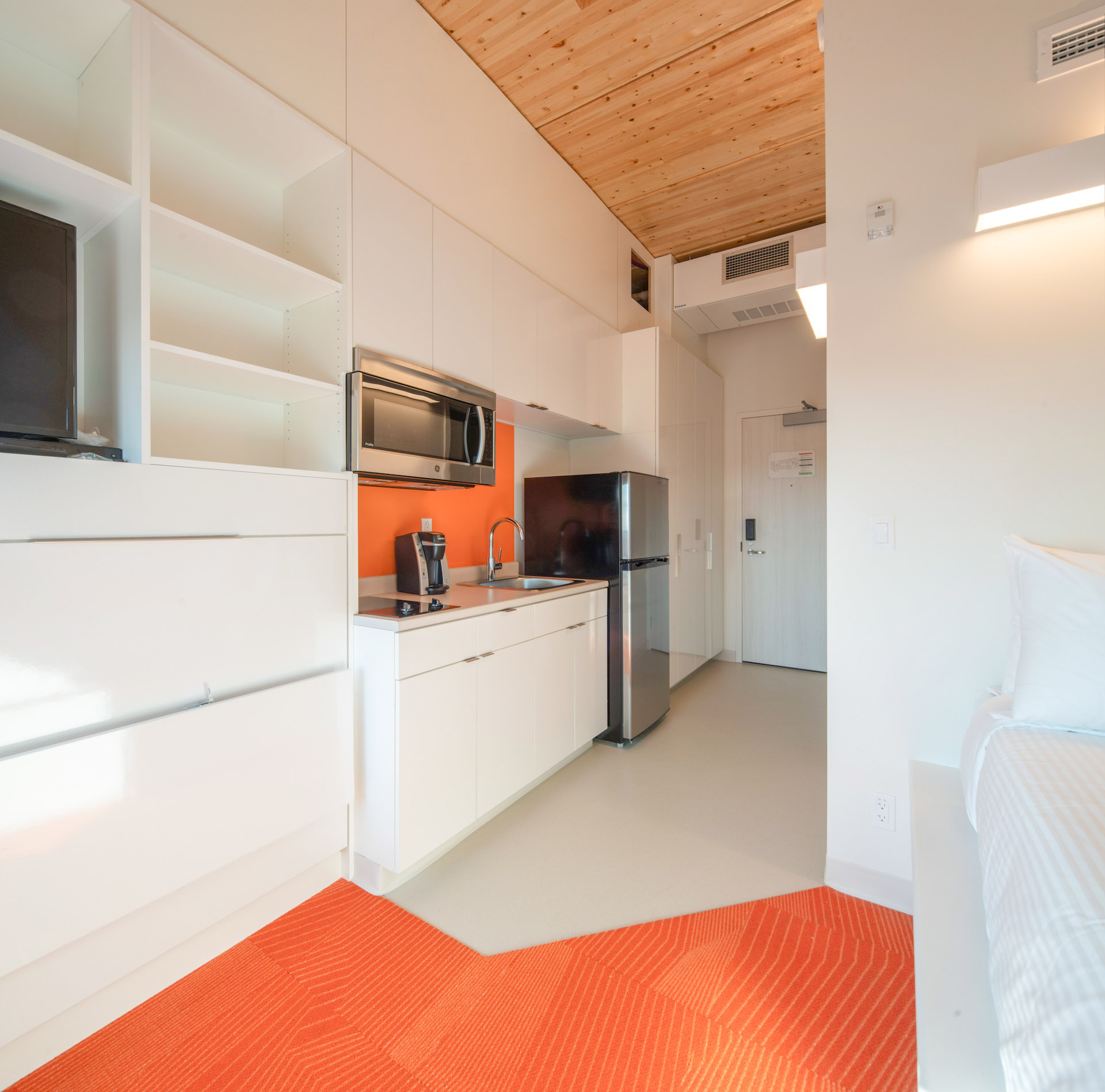RDP’s New Studio Residence

Projects Sponsor
Red Deer Polytechnic’s new residence building showcases innovative technology, giving students a chance to sleep snug as a bug in a solar power generating rug.
Red Deer Polytechnic’s (RDP) new residence was built to expand the residence room count to better serve the central Alberta school’s learners but, in a number of ways, it went (solar panels) above, and beyond.
A bed and a roof over your head wasn’t enough for RDP. They set out to build a residence that would continue the institution’s decade-long “Green Campus” legacy. To RDP, that means more than constructing a sustainable building that students can live in and learn in. It means constructing a sustainable building that students can live in, learn in, and learn from, as well.

The result is a sustainably designed residential building that showcases multiple sustainable design features and technologies. The inclusion of solar photovoltaic panels as the exterior cladding allows the building to produce electrical energy to help reduce electrical utilization for the facility, as well as reducing the carbon emissions associated with the operation of the building.
A production model for the panels was completed in advance of the construction. This model helped predict the electricity production of the panels, and assisted with the financial analysis. It may also be used in future research to compare the predicted outcome to the actual electricity production, a potential boon to solar modeling and research from a project destined to inspire.
The RDP residence panels produce over 120,000 kWh of electricity per year. They also reduce emissions by roughly 82.5 t CO₂e per year. This is the equivalent to taking over twenty-five cars off the road for a year or providing the electricity for fifty-five homes for a year.
The implementation of this building was also unique and a model. An Integrated Project Delivery approach was employed to ensure that many of the major participants such as the owner, consultants, contractor, and main sub-trades were all part of the project advisory team. This approach helps to ensure that all major construction stakeholders are able to provide valuable feedback into the construction process and ensure a best outcome should issues inevitably arise.
One of the major challenges the building faced was that some areas of the building’s elevation required custom sized/shaped panels. The contractor overcame this by utilizing a 3D scanner to scan the building, providing accurate measurements for these custom panels.
Low-flow water fixtures and high-efficiency lighting complement the building’s high-performance envelope system. It’s a building about building better, but the building was also designed with a more ideal student experience in mind.

Each of the one hundred and forty-five studio suites, ten of which are barrier-free, has a self-contained kitchen and a bathroom with a shower. These individual rooms allow students to have privacy and to study in peace. At the same time, and in the same space, a number of common areas on every floor encourage a sense of community and facilitate interaction between residents. While a sustainability showcase, it’s still a student space that has a lesson built right in.
For RDP, the construction project itself is an educational tool, a teachable moment not to be missed. While a money saver, and a responsible choice, the goal is to also encourage everyone on campus, as well as the community at large, to think about the possibility, and pragmatism of sustainability initiatives.
In a way, the students at the RDP residence can sleep in, can sleep snug as a bug in a solar power generating rug, but never be late for a very important class.













